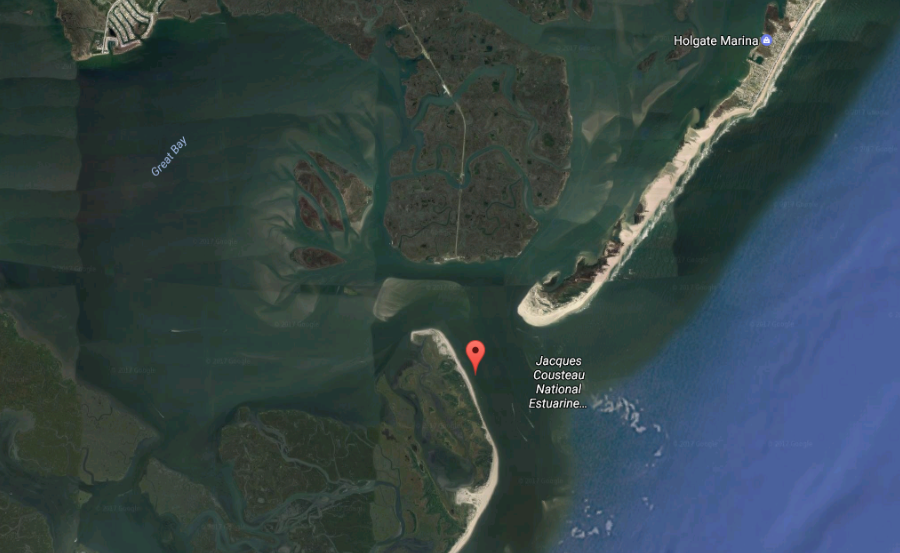Days after Coast Guard announces plan to remove navigation buoys, N.J. says it’ll dredge Little Egg Inlet

(Image: Google.com)
Officials have decided to dredge a major New Jersey waterway for the first time.
The state Coastal Engineering Department on Thursday announced dredging of Little Egg Inlet is needed because parts of the channel have sand buildup which makes navigation challenging and dangerous.
The channel is a major artery between Long Beach Island and Brigantine.
“This situation has become critical so we are moving forward, using state money, to dredge the channel and make it safe again for everyone who needs this vital access for fishing and recreation,” New Jersey Department of Environmental Protection Commissioner Bob Martin said. “We need to take action to get this channel dredged for the safety and enjoyment of the public this summer season.”
The state plans to remove around 1 million to 1.5 million cubic yards of sand to create a deeper channel. This new channel will be 25 feet below mean sea level.
Officials say some parts of the current channel are only 6 feet below mean sea level. Excess sand will be used to replenish nearby beaches.
The U.S. Coast Guard this week temporarily pulled buoys marking the channel due to concerns that buildup of sand in the channel has gotten too severe for safe passage of boats. The Coast Guard warned boaters that if they use the inlet they would be doing so at their own risk.
“Heavy shoaling in the vicinity of Little Egg Inlet has progressed, making the waterway inaccessible to vessels with a draft greater than three feet,” a Coast Guard release said. “At this point, the aids to navigation no longer accurately mark the waterway and are misleading to mariners, which can potentially be more dangerous than having no aids to navigation.”
Authorities say the dredging project will have little to no impact on the Forsythe National Wildlife Refuge and fish migration.
The state announced late last year upwards of $60 million in federal funds earmarked for the dredging of state channels that remain clogged with silt and sand since Superstorm Sandy struck in Oct. 2012.
Since the storm struck, the state has restored 12 channels and begun dredging work on an additional 15.
Some 200 channels have experienced shoaling to varying degrees since the storm.
—————————————————————-
The Associated Press contributed to this report.
WHYY is your source for fact-based, in-depth journalism and information. As a nonprofit organization, we rely on financial support from readers like you. Please give today.

